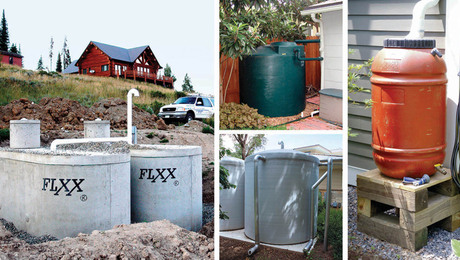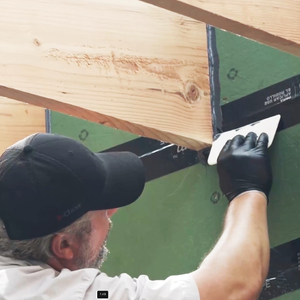Hello i have a plaster wall that has texture paint on it. One of the walls i stripped the paint off. This is what i plan on doing
The wall with the paint still on it i plan to sand it down
The wall stripped of painti was going to sand it then skim coat. After that seal the walls with Gardz then spray on Sherwin williams Prep rite Primer/surfacer then paint. My question is would you all go about this the same way or would you do it a different way? What steps and products would you use. I want my wall to be smooth. Thanks for any info


















Replies
Do a search here subject "D-mix"
There are threads describing this way to do what you want in a single step process much easier, not that there is anything wrong with your intended method.
Welcome to the
Taunton University of Knowledge FHB Campus at Breaktime.
where ...
Excellence is its own reward!
Hey thanks alot much appreciated
I have to ask all of you skilled skimmers out there for some help, doing a project on my home which involved tearing down wallpaper that was not properly put on. My problem ended up being that a lot of the initial paper (in big chucks) from the drywall tore off as well so i have to skim my walls -- can someone give me some advice on doing this?
I guess I am looking for advice on a way to skim my walls properly so that it looks like it was original. I would appreciate advice on compounds, best taping knives to skim with and plain old advice to make it look good. Alot of times I have problems feathering it out so and it looks very evident that a DIYer did it instead of a PRO! Thanks for any suggestions
See post #2 of this thread._______________________________________________________________
If you are what you eat, I'm fast, cheap and easy.
first get as much of the lose paper off that you can.then i put 1 or 2 coats of kiltz oil base primer on.let dry and sand lightly to remove the rough stuff. i use reg. drywall mud,but search for d-mix here a lot of guys think its the greatest,i just haven't tried it yet. i use a 6" knife to apply mud to wall then come over it with a tool called magic trowel [you can get them at a s-w paint store or on ebay] take your time because whatever is rough YOU have to sand off. usally one coat gets it,if not you can hit it the second time.prime with kilz again and your ready to paint.have fun! larryhand me the chainsaw, i need to trim the casing just a hair.
Just to summarize but ask again just in case -- you think that i can do this w/ one coat and a 6" taping knife? Or should i do one light coat w/ the 6" and then do a lite coat w a 12" to feather it or is that to much
Thanks
all i use the 6" for is to get it on the wall and spread out fairly well,you will then need to come back and catch it with the 12" or mirical trowel to level it up. when you get ready to sand you might look at renting the porter cable sander from home depot.if you have a lot of sanding it's 30.00 well spent.with just the 6" knife you will have lots of sanding lol larryhand me the chainsaw, i need to trim the casing just a hair.
If you're not experienced at spackling, don't even think about attempting to finish with one coat. That is probably the single biggest mistake that first-timers make. And then, tired of the seemingly endless sanding, they call it quits and live with a sup-par job.
Instead, think about getting the job done with many coats of compound (at least 3, more is better). Apply each coat with significant pressure, hardly applying any compound (you will actually be applying more than it seems). If you haven't layered on as much as you need, it's still easier to add another coat than it is to sand.
Between coats, scrape off any ridges with a dry taping knife and sand any stubborn ridges.
If I was doing a whole wall, I would probably use a 12" knife for every coat.
Remember, your goal is to keep sanding to an absolute minimum.
-Don
Yes, my experience supports what Don says. Much easier to do many thinner & flatter coats than slopping a bunch on then having to remove it via sanding. What a nasty and messy wate of time. I do very little sanding too, mostly for the final coat.
Practice using a trowel instead of a knife. I have weaker hands and find that I can apply more pressure and better control with a trowel than with the knife.
I also keep a spray bottle handy to clean, wet & lubricate my trowel occasionally.
Both Dan and Sharpblade have good advice.
I'm just a DIY, doing a TON of work to my home. Here in SoCal, they seemed to have fallen in love with the textured wall - something I don't really like in a hallway. I redid the hallway - I took out the orangepeel texture by applying at least 4 coats of setting mud in the way Dan described. One coat applied oly going one direction, the next going 90 degrees opposite. Eventually the bumps cover themselves up and you wind up with a flat surface.
It's much easier to deal with a ridge of too much mud, than to deal with a line where the edge of your knife cut into the mud.
Scrape with the trowel or knife many times - sand once... and just a little.Rebuilding my home in Cypress, CA
Also a CRX fanatic!
6" would be a joke for skim-coating. Use the widest blade you can handle
Welcome to the Taunton University of Knowledge FHB Campus at Breaktime. where ... Excellence is its own reward!
Do exactly what always said. If you're novice to skimming then just use regular jc in light coats and sand between each getting smoother and more even with each one. Use the heavy stuff (green top) to start, then the lightweight stff after.There are those here who swear by the "D-Mix" and eventually you might want to try it. It's really nothing new in the world of skimcoating. I have my own techniques that are faster but more complicated.
There are those here who swear by the "D-Mix" and eventually you might want to try it. It's really nothing new in the world of skimcoating. I have my own techniques that are faster but more complicated.
I would love to hear a bit more about your techniques. I haven't used "D-mix" myself. I'm a big fan of Easy Sand (I usually use the 20 minute stuff). It can be mixed to whatever consistency I need. I've tried added primer to it and it seems to spread a lot easier, but since I'm usually working in lived-in homes, I'm concerned about cleanup if I spill any compound. I don't add paint unless every square inch of floor/furniture is covered.
I've only tried rollering on a skim coat once. It wasn't an ideal situation (a bathroom with no room to maneuver) so I went back to the taping knives.
-Don
Never sand between coats. That just adds to the mess and aggravation.
Welcome to the Taunton University of Knowledge FHB Campus at Breaktime. where ... Excellence is its own reward!
"Never sand between coats. That just adds to the mess and aggravation."Agreed, but you have to knock off any real high points or ridges before you recoat. The good spacklers don't sand at all. I like to use a plasterer's mop.
I use the rywall knife to knock down ridges
Welcome to the Taunton University of Knowledge FHB Campus at Breaktime. where ... Excellence is its own reward!
Did the go-over with the knife before starting the next coat thing for the first time yesterday, it works great! Since my 90min mud had not totally gotten to rock hard yet I was able to essentially carve off some high spots too. The next coat went on really well too.
I was able to do a seam in about half the time it usually takes me.
Thanks for the tip
the original, I think http://forums.taunton.com/tp-breaktime/messages?msg=51303.20
everyone thanks for your advice, like i said its my home so I want to make it look good.
I like to use 3' wide self adhesive fiberglass skimmed with Durabond. You could also skim with JC from the can. There was a FHB article by Mario Rodriguez some time back about the technique.
Mario used a grout float if I remember right to follow the contours of the original surface.
There is also Nu-Wall which I've never tried.
" After that seal the walls with Gardz"
Why.
I have not read the label, but I thought that it's main purpose was to seal rough DW where the paper was torn wallpaper removal.
Here is from the Zinnser's
"Is a unique water-base sealer for porous and potential problem surfaces. It is formulated to deeply penetrate and dry to a hard, moisture resistant film that seals and binds down porous, chalky and crumbling surfaces, paints and texture finishes. GARDZ is recommended for: damaged drywall, new drywall, spackling and joint compound skim coats, plaster, calcimine, uncoated wallpaper, wallcovering adhesive residue, texture paint, popcorn ceilings and builder's flat paint."
You have already covered up all of those problems with the skim coat.
Bill i was going to use Gardz to seal the skim coat the info from their website says to use it for that. The test i did on a patch off wall was still chalky and the paint would flake off. Gardz made it hard. Now i used regular joint compound and not the setting type joint compound. If i dont use the d mix would you all suggest use setting jc over all prupose jc?
I have not tried to use setting except for small area repairs.Personally I would not try to use it on a whole wall.You spend a good bit of time cleaning up from the last batch and mixing the next one. You can't just mix more in the same bucket without cleaning it first.Also with regular mud you can alwasy "wash it off" if needed.Had to finish up a job a "carpenter" that the client was using started some repairs. !/4" thick in some places. I will still be there sanding.But went over it with a wet sponge. Started wipe off the surface. Then as it got damp scraped the rest off.Don't know why DW compound would be caulk and paint peeling off unless the mud was bad in some way.
calcimine got my attention. I'll be making note of Gardz
Welcome to the Taunton University of Knowledge FHB Campus at Breaktime. where ... Excellence is its own reward!